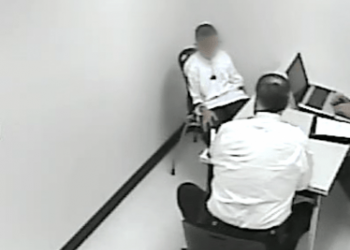
Interrogating Minors and Beheler Admonishments
Absent a determination that a criminal suspect is in custody, a Miranda advisal and wavier is not legally required in order to question him. However, telling a suspect that he is not under arrest and not in trouble does not necessarily, depending upon the circumstances, render the suspect not in custody for purposes of Miranda. The fact that a suspect is known by a police interrogator to be a minor is a factor to consider in determining whether he is in custody.
17-year-old defendant Matthew W.—all 5’ 6” and 130 pounds of him—was sitting in his car on Main Street in the City of Napa during the early morning hours (i.e., between 12:45 and 1:00 a.m.) of January 21, 2020, waiting for his friend, 17-year-old Andrew G., to sneak out of his house so the two of them could hang out together. Although later testimony from defendant, Andrew, and Ralph C. (the victim in this case) varied in some respects, particularly as to who was the primary aggressor, the following generally describes what occurred. Andrew, in his haste to meet up with his bud, ran (or “walking at a fast pace”) out from behind a fence next to a car and almost ran into Ralph C. Ralph, pushing his bike down the street, was on his way to a 7-Eleven. Ralph was described in the case decision as a homeless man who lived in a nearby storage shed. At the time, he was 57 years of age, 5’ 10” or 11” tall, and weighing some 230 pounds. He was also an admitted alcoholic, drinking a fifth of vodka a day. That night, although denying he was under the influence, Ralph admitted that he had taken a “hit” on a marijuana cigarette earlier. On the preceding Sunday (two days earlier), he had ingested some methamphetamine. But that doesn’t mean Ralph wasn’t a good citizen. Thinking that Andrew might have been breaking into the car, Ralph asked Andrew what he was doing. An apparently stressed Andrew responded, as he ran past Ralph and across the street, that he lived there. Believing that he “was being bullshitted,” Ralph gave chase down the street using a flashlight for illumination. While some 100 yards behind Andrew, Ralph noticed a Mustang flashing its lights at the end of the block. Andrew ran pass the Mustang, telling it’s occupant (later determined to be defendant) to “be cool,” that there was a “tweaker” following him. Catching up with Andrew, Ralph got off of his bike and asked him why he was running and what was going on. Defendant later claimed Ralph was not nearly so polite, hearing him threaten Andrew’s life. Either way, while Ralph was confronting Andrew, defendant came up from behind him and screamed; “Leave my friend alone,” or words to that effect. Defendant threw what was at first believed to be a simple punch at Ralph, but later determined to be defendant slashing at Ralph with a knife, causing a deep cut to Ralph’s left bicep. The wound later required Ralph to undergo surgery, leaving him with a numbness in his thumb and limited movement in his fingers due to nerve damage. Defendant and Andrew retreated to defendant’s house to discuss the night’s events. Andrew was later summoned by his father to return home and defendant went to bed. At 6:00 a.m. (while it was still dark), Napa Police Department Detective Brendt Keown (wearing a “marked police vest” and cargo pants) showed up at defendant’s home with four uniformed police officers, all of whom were visibly armed. Defendant’s mother answered the door. Upon the detective asking if they could speak with defendant, mom allowed Detective Keown and two of the officers inside while she summoned defendant from his bedroom. Defendant came out of his room and was immediately asked if he would consent to being patted down for weapons. After the patdown, the detective and defendant sat down at the kitchen table to talk while one of the uniformed officers stood 10 to 15 feet behind him and the other by the front door, near the kitchen. Defendant’s mother’s request to be present during the questioning was denied, but she was allowed to wander about the house at will, generally close enough to hear what was going on. When defendant complained about being cold, Detective Keown pulled a blanket off a nearby couch and gave it to him. Detective Keown then told defendant that he wanted to talk to him about what had occurred that night. Despite having already interviewed Andrew, who told him that defendant had stabbed Ralph, Detective did not tell defendant he was a suspect in the stabbing. Nor did he read him his Miranda rights. Instead, he told defendant that he was not under arrest and that he (the detective) was there just to ask defendant some questions. Defendant asked whether he was in trouble, to which Detective Keown responded; “No. I just need to know what happened.” Defendant was not handcuffed nor did any officer draw a gun during the questioning. The questioning was “calm and professional,” and “not particularly lengthy.” In the ensuing interrogation, defendant admitted to having stabbed Ralph, although he intimated that Ralph had been the aggressor. Following the questioning, defendant was arrested. Charged in Juvenile Court by the Napa County District Attorney with one count each of assault with a deadly weapon (P.C. § 245(a)(1)) and assault by means likely to produce great bodily injury (P.C. § 245(a)(4)), plus various allegations, a true finding was made by the magistrate following a contested jurisdictional hearing. Placed on probation, defendant appealed.
This bulletin was sponsored by Government Training Agency "GTA" - a leader in P.O.S.T. Certified Law Enforcement Training!https://www.govtraining.com/





